From the foundation of the State until 1989, when Coillte was established, forest development was carried out in Ireland with minimal consultation. This has changed since the turn of the century as private – mainly farmer – landowners dominated afforestation programmes.
We now have a greater understanding of what the public wants from our forests as a result of stakeholder consultations during forest certification and the results of a number of studies and reports, especially the following three studies initiated by the Department of Agriculture, Food and the Marine and Coillte in 2022:
1 Department of Agriculture survey report “Working Towards Ireland’s Shared Vision for Forestry and a New Forest Strategy”.
2 Department of Agriculture “Public Attitudes Survey on Forestry”.
3 Coillte “Public Consultation Survey”. These provide a good insight to people’s views on forestry and the kind of forests they would like to see emerge, including the services and goods that forests provide.
1 Shared vision
The Department of Agriculture survey report, conducted by M-CO, received 3,148 responses to the online survey and 34 valid written submissions. It was established to inform the forest strategy and a shared vision for Irish forestry.
In response to the leading question about the need for more forests in Ireland, 97% of respondents were in favour. In a follow-up response to the statement “Ireland needs more forest, because…”, the survey analysis states: “Climate change (expressed mainly as carbon sequestration/sinks and climate adaptation such as flood prevention and soil integrity), nature (expressed mainly as biodiversity, improved habitats and ecosystems) were the dominant themes discussed. These were supported by wider environmental benefits (or ecosystem services) such as improved air quality.”
It also pointed out that “a large number of responses discussed the desire for increased ‘native’ and broadleaf species with a significant discussion around the tensions around non-native species”.
The “right reasons” for forest creation included nature (98%), climate change (98%), people (94%), wood (80%), aesthetics (78%) and rural development (78%).
In the “Right reasons – forests for wood” section, 69% preferred more timber usage in Irish homes with only 5% disagreeing.
Again, only 5% disagreed with more Irish-grown timber in building houses. However, 27% disagreed that conifers – the only species suitable for construction – should be planted to achieve the goal of more timber usage in building homes.
In response to the question, “Would you like more or less forests”, 95% opted for more and under 1% for less.
The majority of respondents that access forests for recreation would like to see more native species whereas landowners with forestry and those employed in forestry consider a need for diversity in species.
2 Public attitudes
The Department of Agriculture survey, conducted by Behaviour & Attitudes (B&A), found that “three out of four people were in favour of planting more forests in their county, as well as more trees in urban areas”.
Interviewees said the most important benefits of forests were climate change (42% of respondents), enhanced air quality (15%), contribution to wildlife and biodiversity (14%) and mental health benefits (14%).
Regarding forest structure, especially tree species mix, the results were summarised by B&A: “When given a choice between planting broadleaf or deciduous trees, or alternatively, coniferous or evergreen, there tended to be comparatively even preference. A slightly greater number who expressed a preference for one type or other nominated broadleaf, but nonetheless the vast majority felt that a mix between conifer and deciduous was preferable.”
This “slightly surprised” the researchers: “We perhaps naively assumed that there might be a greater preference for broadleaf, but ultimately this was not borne out by the research, with most content to say that they like either type of tree, not preferring one ahead of the other.”
There are subtle variations between regions in attitudes towards species mix. For example, respondents in Dublin had a preference for a 76% species mix, while this was down to 62% in Connacht and Ulster.
3 Coillte public consultation
Conflicting views on what kind of forests should emerge are best illustrated in two Coillte RedC public attitude (PA) and public consultation (PC) surveys. The PA poll was conducted online among 1,007 adults nationwide while the PC survey – 599 responses – was accessed via the Coillte website. PC respondents were provided with a Coillte information booklet, Strategic Vision for Our Future Forest Estate.
Like other polls, there was a broad agreement – between 80% and 87% – that Ireland needs to “increase its forest cover significantly and quickly to combat global warming”.
The PA study interviewees favoured conifers (75%) “that grow quickly and capture carbon at a high rate [which] is important for climate mitigation”, but when asked about long-term carbon storage, 82% of respondents favoured broadleaves.
The respondents to the PC study favoured only 43% conifers while 93% favoured broadleaves.
When PA and PC polls are combined, there is an acceptance of conifer-broadleaf mix but a preference for broadleaves.
There is broad agreement on the importance of forests to produce “more wood products that can substitute for carbon intensive materials [which] is important in mitigating climate change”. Some 67% of the PA respondents were in favour, with 81% of the PC survey in agreement.
As conifers are the only species that can displace fossil-based material in construction, this reply, especially from PC respondents, would seem to be at odds with their opposition to conifers.
There is no ambiguity between the B&A and RedC surveys on the role of forest in recreation.
This is not surprising given the huge numbers of visitors to Irish forests.
Also, the survey was conducted as Ireland was emerging from the COVID-19 pandemic when record numbers visited Irish forests.
“Forests are seen as hugely important in terms of providing spaces for both outdoor physical activity and also for mental health and wellbeing,” according to the RedC poll.
Regarding the contribution of forestry to local communities, respondents to the B&A survey were extremely positive.
Overall, 88% of those surveyed said they thought forests and woodlands benefited local communities. “A very small proportion – just 3% – suggested that forests and woodland do not provide benefit to their local community,” claimed the RED C researchers.
While these polls provide a wide range of views, there are areas of commonality between all three studies. For example, there is an overwhelming majority in favour of more forests, while the species mix needs further analysis but a majority favour more broadleaves or native species.
However, most interviewees favour increased construction in wood which will be sourced from coniferous – mainly Sitka spruce – forests.
While views also vary on why we should plant more forests, climate change is the dominant reason. It is clear from the diverse reasons for more forest that the public preference is for a multipurpose forest resource.
Now is time to seek the views of forest owners as they are the people who will determine Ireland’s future forest resource. 2,000 native Scots pine planted in Glenveagh
National Parks and Wildlife Service (NPWS) staff at Glenveagh National Park, Co Donegal, have planted 2,000 native Irish Scots pine trees in the Upper Glen of the park.
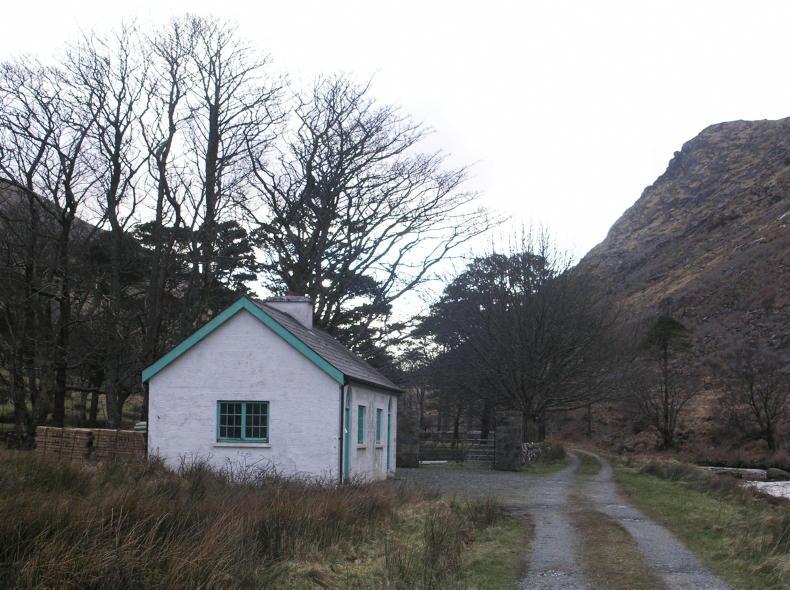
The 2,000 Scots pine planted in a 1.6ha field next to the Stalking Hut (pictured) are of native Irish origin unlike the Derrylahan pine which were sourced from Scottish seed.
“This activity is part of a broader suite of measures to improve native woodland habitat condition in the park,” said Minister of State for Heritage and Electoral Reform Malcolm Noonan.
While Scots pine of Scottish origin has been present in the park since the 1860s, the recently planted trees are of native Irish origin, sourced from a nursery grower in Co Galway who collected the pine seed in the Burren National Park, under licence from the NPWS.
From the foundation of the State until 1989, when Coillte was established, forest development was carried out in Ireland with minimal consultation. This has changed since the turn of the century as private – mainly farmer – landowners dominated afforestation programmes.
We now have a greater understanding of what the public wants from our forests as a result of stakeholder consultations during forest certification and the results of a number of studies and reports, especially the following three studies initiated by the Department of Agriculture, Food and the Marine and Coillte in 2022:
1 Department of Agriculture survey report “Working Towards Ireland’s Shared Vision for Forestry and a New Forest Strategy”.
2 Department of Agriculture “Public Attitudes Survey on Forestry”.
3 Coillte “Public Consultation Survey”. These provide a good insight to people’s views on forestry and the kind of forests they would like to see emerge, including the services and goods that forests provide.
1 Shared vision
The Department of Agriculture survey report, conducted by M-CO, received 3,148 responses to the online survey and 34 valid written submissions. It was established to inform the forest strategy and a shared vision for Irish forestry.
In response to the leading question about the need for more forests in Ireland, 97% of respondents were in favour. In a follow-up response to the statement “Ireland needs more forest, because…”, the survey analysis states: “Climate change (expressed mainly as carbon sequestration/sinks and climate adaptation such as flood prevention and soil integrity), nature (expressed mainly as biodiversity, improved habitats and ecosystems) were the dominant themes discussed. These were supported by wider environmental benefits (or ecosystem services) such as improved air quality.”
It also pointed out that “a large number of responses discussed the desire for increased ‘native’ and broadleaf species with a significant discussion around the tensions around non-native species”.
The “right reasons” for forest creation included nature (98%), climate change (98%), people (94%), wood (80%), aesthetics (78%) and rural development (78%).
In the “Right reasons – forests for wood” section, 69% preferred more timber usage in Irish homes with only 5% disagreeing.
Again, only 5% disagreed with more Irish-grown timber in building houses. However, 27% disagreed that conifers – the only species suitable for construction – should be planted to achieve the goal of more timber usage in building homes.
In response to the question, “Would you like more or less forests”, 95% opted for more and under 1% for less.
The majority of respondents that access forests for recreation would like to see more native species whereas landowners with forestry and those employed in forestry consider a need for diversity in species.
2 Public attitudes
The Department of Agriculture survey, conducted by Behaviour & Attitudes (B&A), found that “three out of four people were in favour of planting more forests in their county, as well as more trees in urban areas”.
Interviewees said the most important benefits of forests were climate change (42% of respondents), enhanced air quality (15%), contribution to wildlife and biodiversity (14%) and mental health benefits (14%).
Regarding forest structure, especially tree species mix, the results were summarised by B&A: “When given a choice between planting broadleaf or deciduous trees, or alternatively, coniferous or evergreen, there tended to be comparatively even preference. A slightly greater number who expressed a preference for one type or other nominated broadleaf, but nonetheless the vast majority felt that a mix between conifer and deciduous was preferable.”
This “slightly surprised” the researchers: “We perhaps naively assumed that there might be a greater preference for broadleaf, but ultimately this was not borne out by the research, with most content to say that they like either type of tree, not preferring one ahead of the other.”
There are subtle variations between regions in attitudes towards species mix. For example, respondents in Dublin had a preference for a 76% species mix, while this was down to 62% in Connacht and Ulster.
3 Coillte public consultation
Conflicting views on what kind of forests should emerge are best illustrated in two Coillte RedC public attitude (PA) and public consultation (PC) surveys. The PA poll was conducted online among 1,007 adults nationwide while the PC survey – 599 responses – was accessed via the Coillte website. PC respondents were provided with a Coillte information booklet, Strategic Vision for Our Future Forest Estate.
Like other polls, there was a broad agreement – between 80% and 87% – that Ireland needs to “increase its forest cover significantly and quickly to combat global warming”.
The PA study interviewees favoured conifers (75%) “that grow quickly and capture carbon at a high rate [which] is important for climate mitigation”, but when asked about long-term carbon storage, 82% of respondents favoured broadleaves.
The respondents to the PC study favoured only 43% conifers while 93% favoured broadleaves.
When PA and PC polls are combined, there is an acceptance of conifer-broadleaf mix but a preference for broadleaves.
There is broad agreement on the importance of forests to produce “more wood products that can substitute for carbon intensive materials [which] is important in mitigating climate change”. Some 67% of the PA respondents were in favour, with 81% of the PC survey in agreement.
As conifers are the only species that can displace fossil-based material in construction, this reply, especially from PC respondents, would seem to be at odds with their opposition to conifers.
There is no ambiguity between the B&A and RedC surveys on the role of forest in recreation.
This is not surprising given the huge numbers of visitors to Irish forests.
Also, the survey was conducted as Ireland was emerging from the COVID-19 pandemic when record numbers visited Irish forests.
“Forests are seen as hugely important in terms of providing spaces for both outdoor physical activity and also for mental health and wellbeing,” according to the RedC poll.
Regarding the contribution of forestry to local communities, respondents to the B&A survey were extremely positive.
Overall, 88% of those surveyed said they thought forests and woodlands benefited local communities. “A very small proportion – just 3% – suggested that forests and woodland do not provide benefit to their local community,” claimed the RED C researchers.
While these polls provide a wide range of views, there are areas of commonality between all three studies. For example, there is an overwhelming majority in favour of more forests, while the species mix needs further analysis but a majority favour more broadleaves or native species.
However, most interviewees favour increased construction in wood which will be sourced from coniferous – mainly Sitka spruce – forests.
While views also vary on why we should plant more forests, climate change is the dominant reason. It is clear from the diverse reasons for more forest that the public preference is for a multipurpose forest resource.
Now is time to seek the views of forest owners as they are the people who will determine Ireland’s future forest resource. 2,000 native Scots pine planted in Glenveagh
National Parks and Wildlife Service (NPWS) staff at Glenveagh National Park, Co Donegal, have planted 2,000 native Irish Scots pine trees in the Upper Glen of the park.

The 2,000 Scots pine planted in a 1.6ha field next to the Stalking Hut (pictured) are of native Irish origin unlike the Derrylahan pine which were sourced from Scottish seed.
“This activity is part of a broader suite of measures to improve native woodland habitat condition in the park,” said Minister of State for Heritage and Electoral Reform Malcolm Noonan.
While Scots pine of Scottish origin has been present in the park since the 1860s, the recently planted trees are of native Irish origin, sourced from a nursery grower in Co Galway who collected the pine seed in the Burren National Park, under licence from the NPWS.





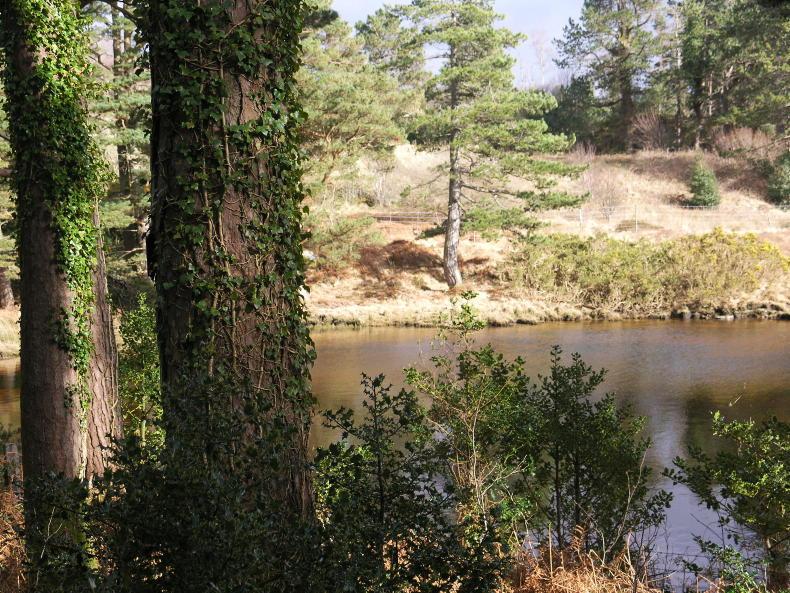
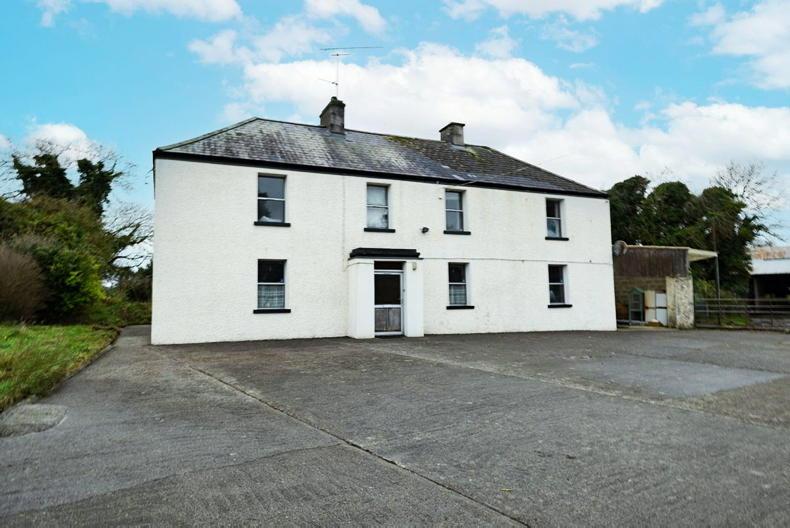
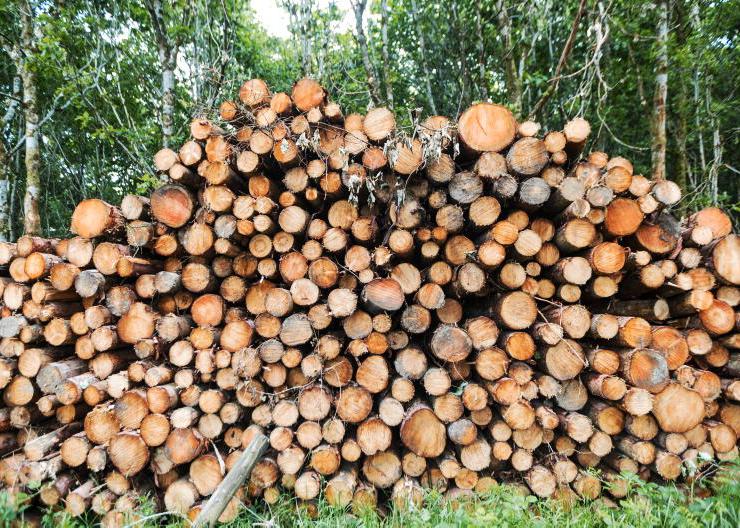
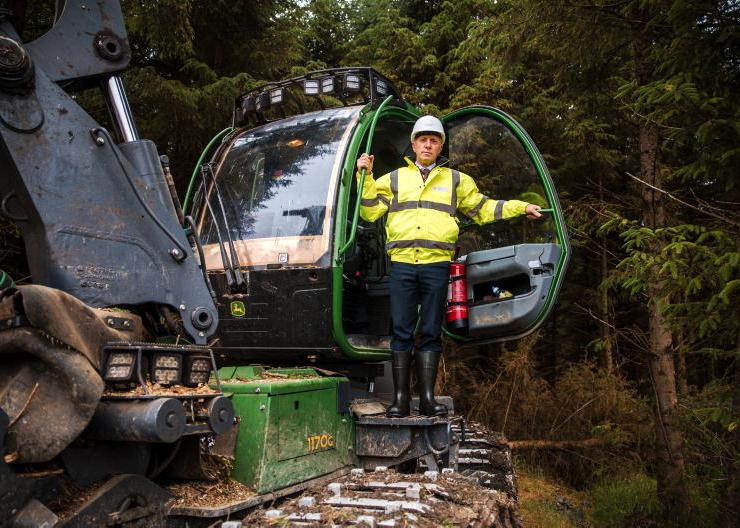
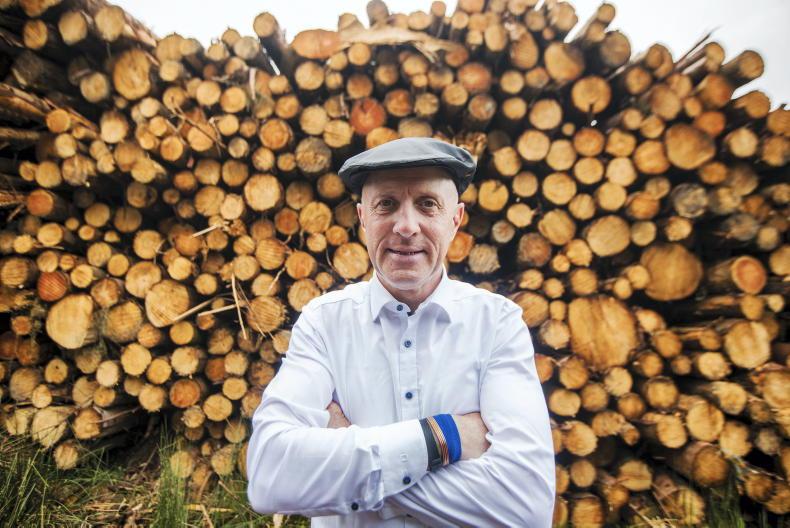
SHARING OPTIONS